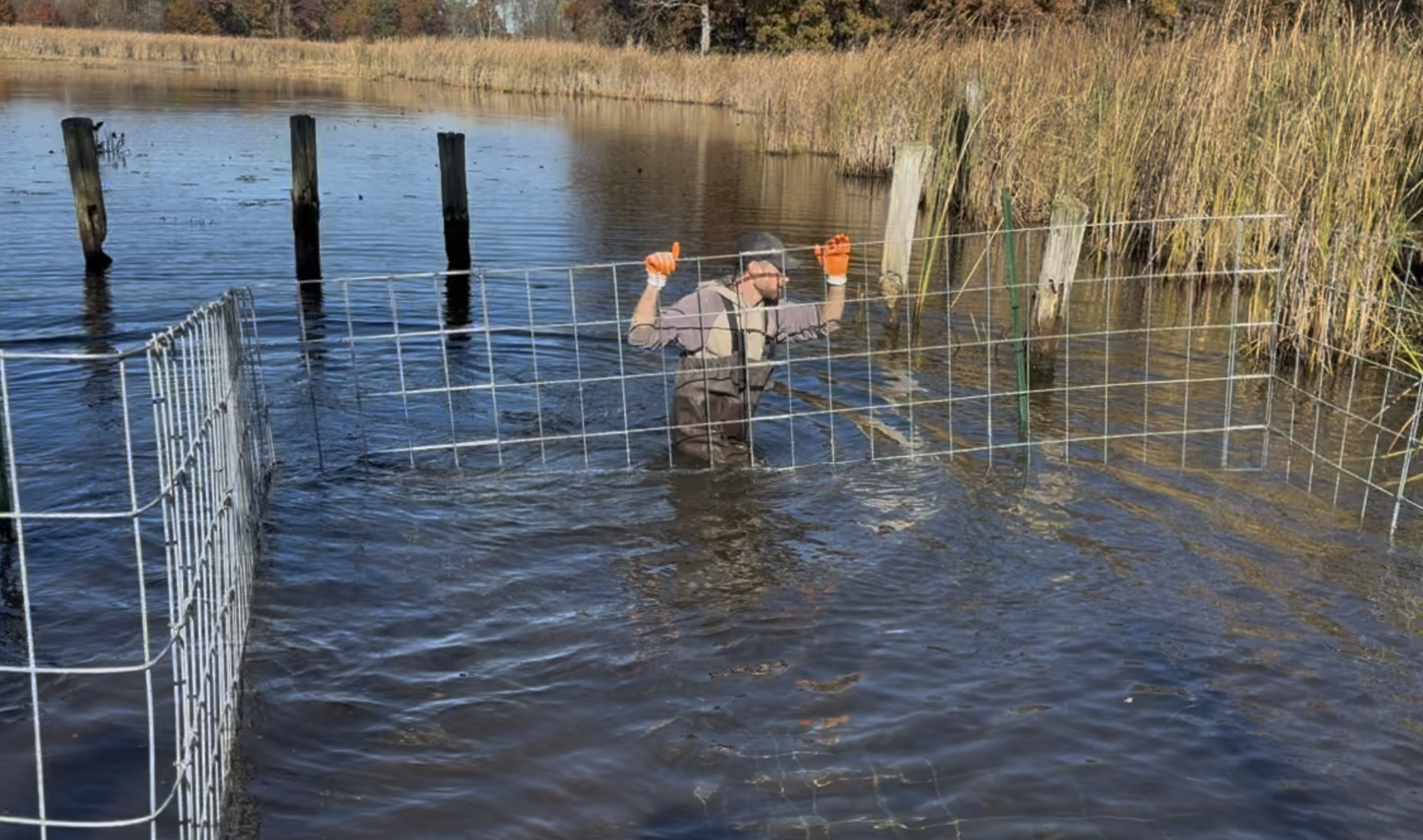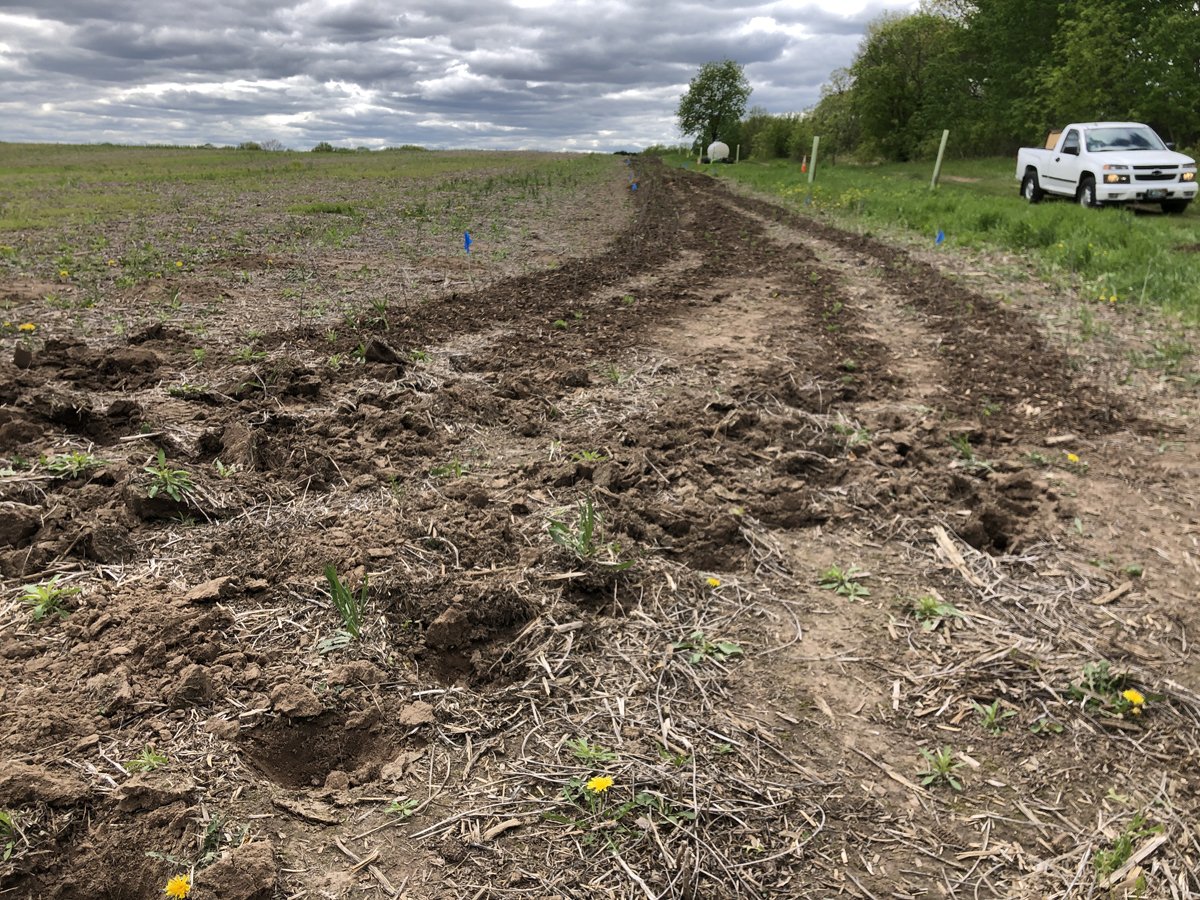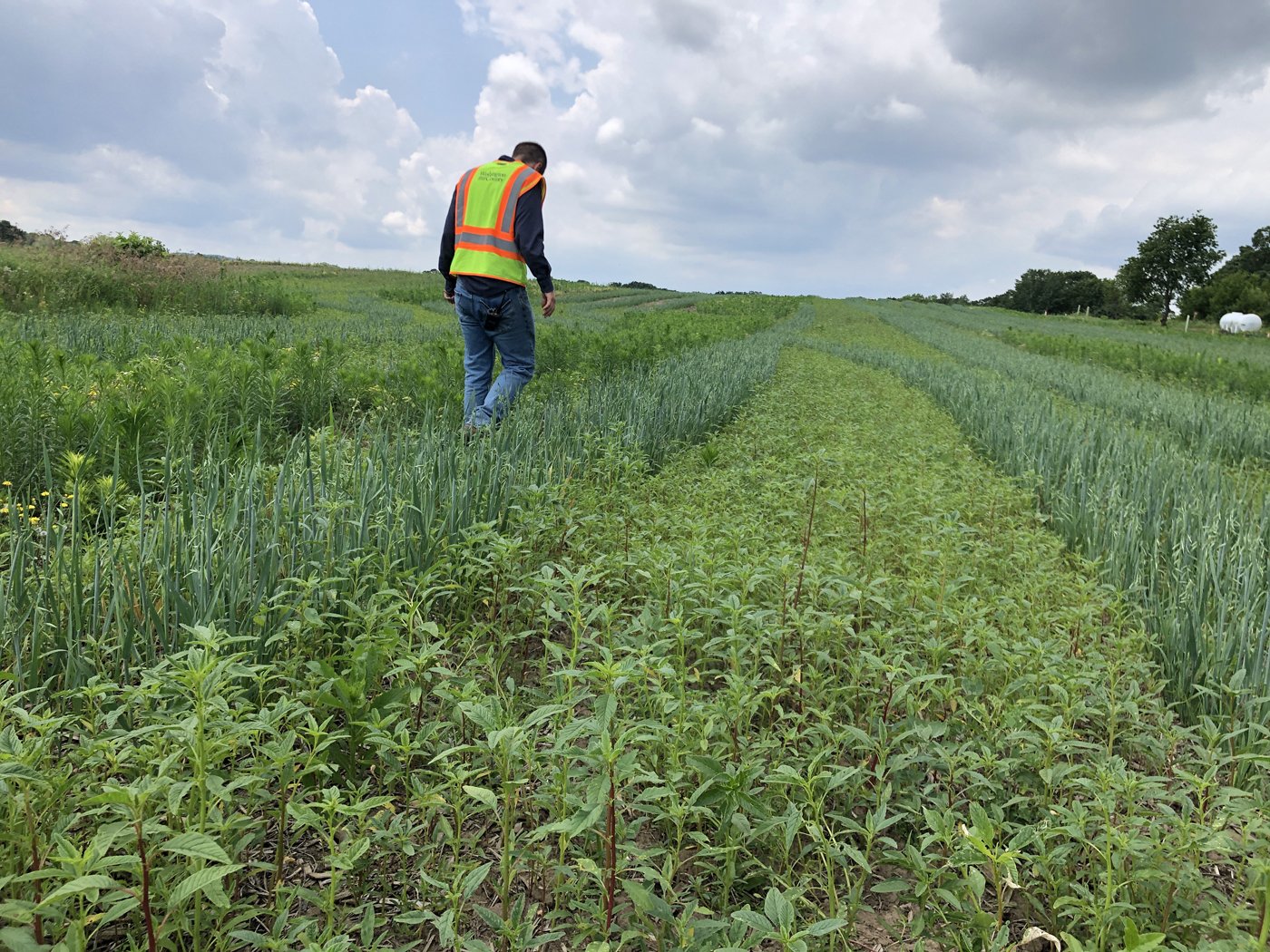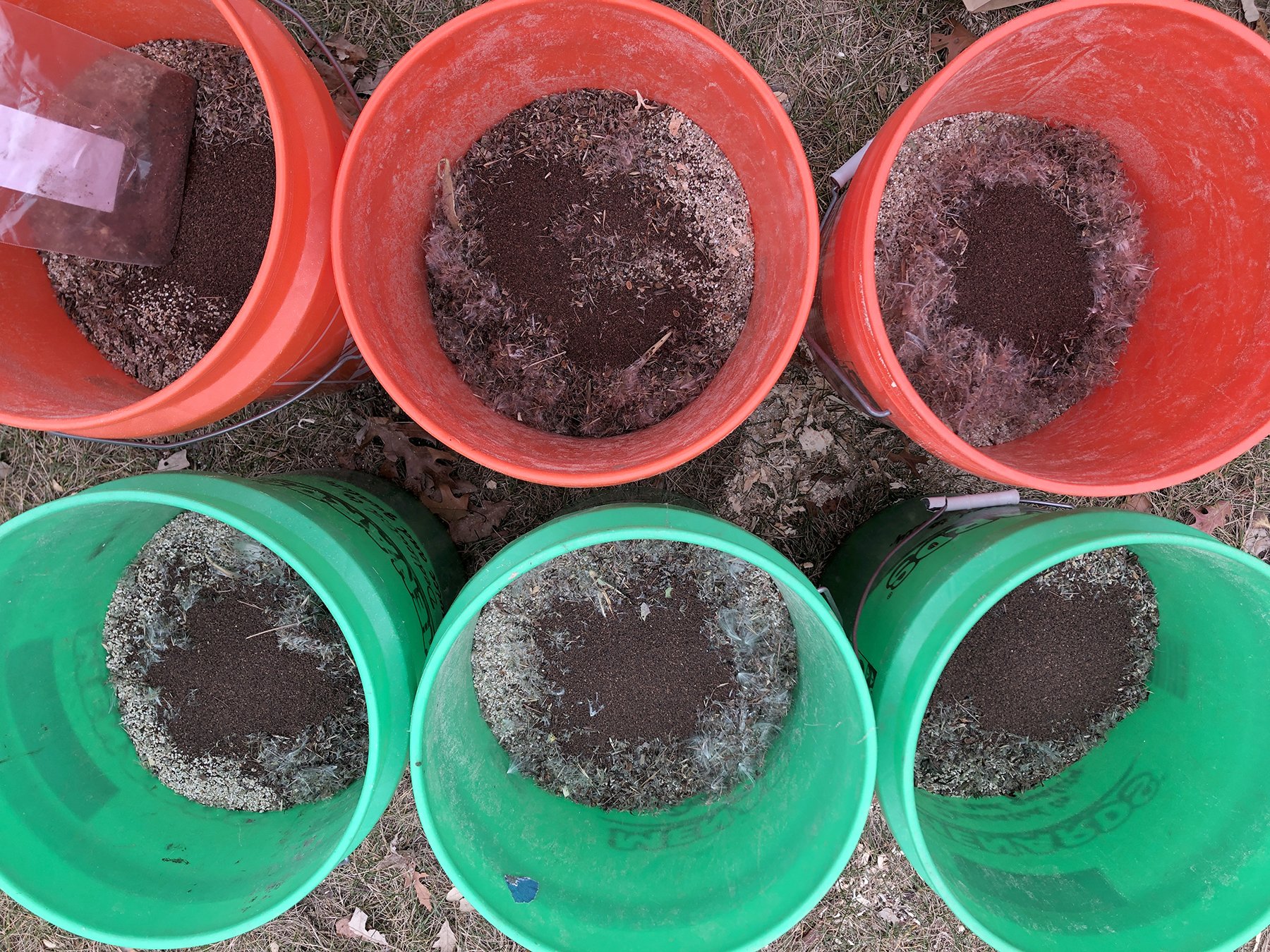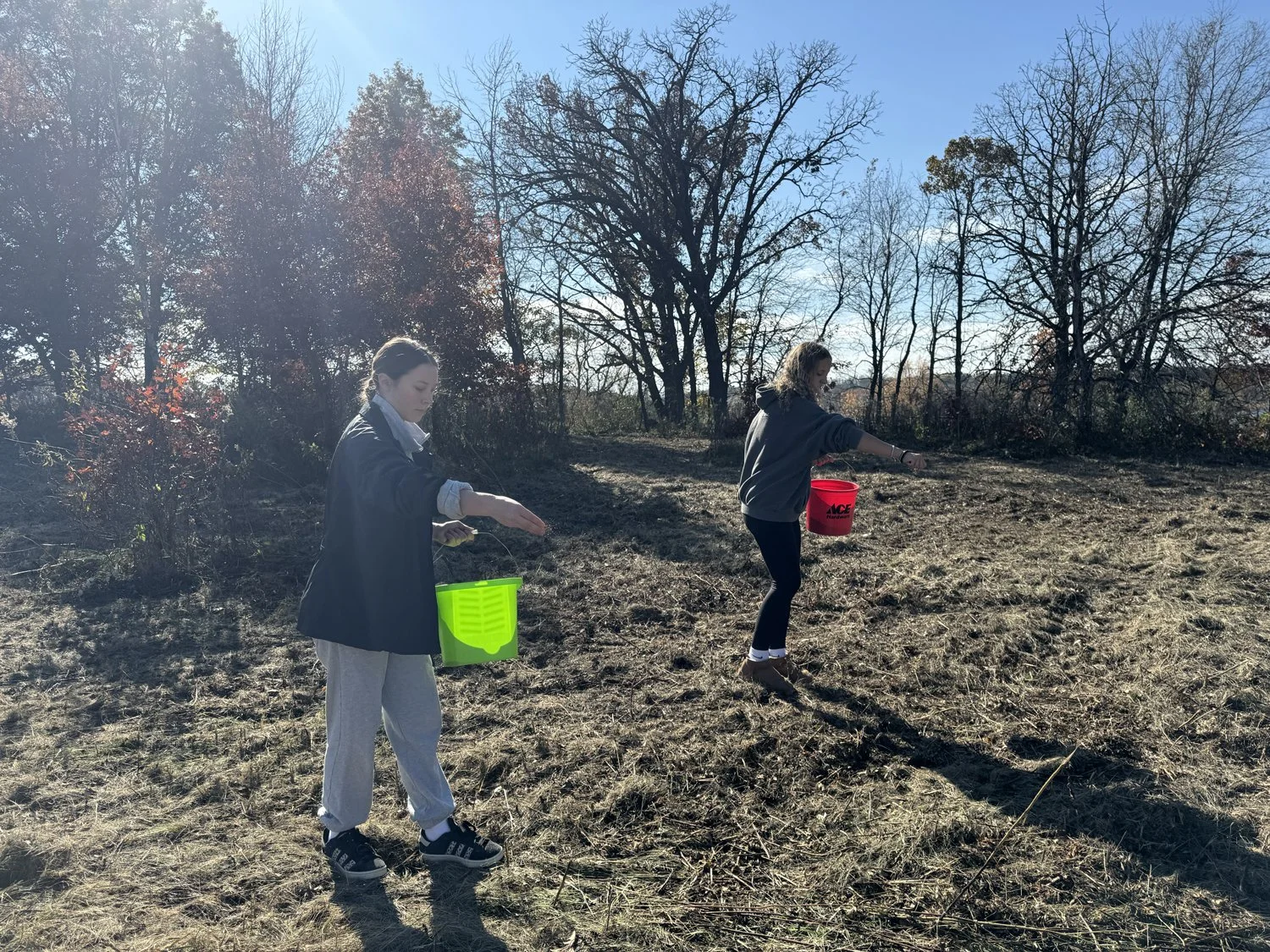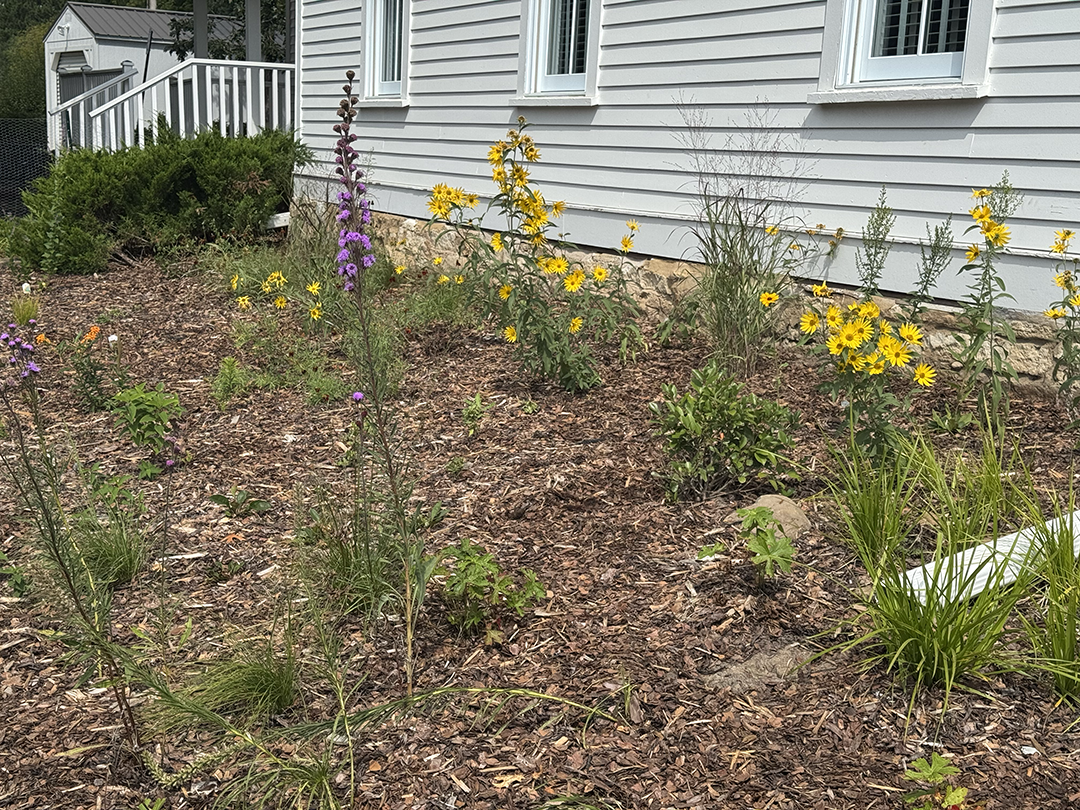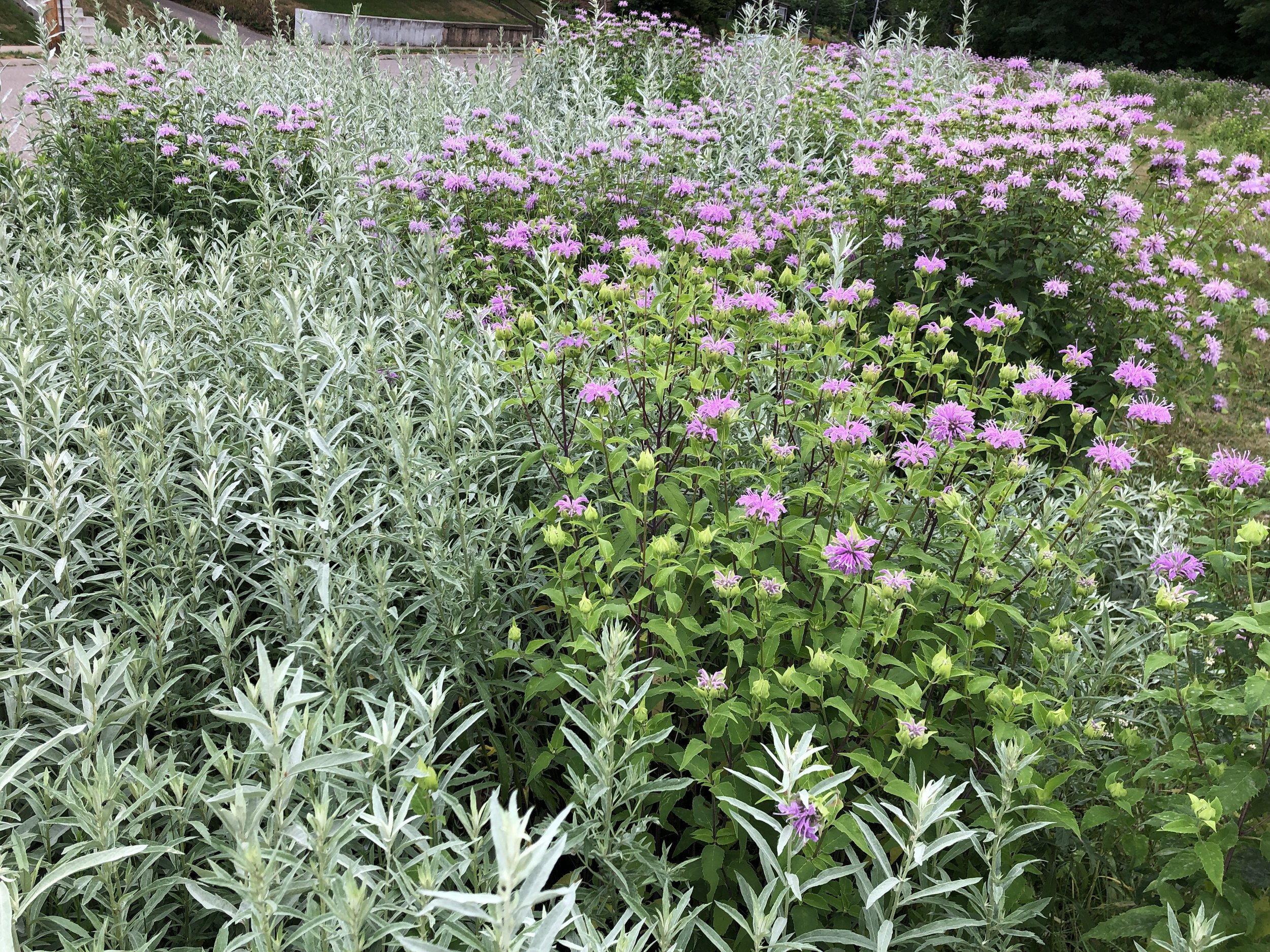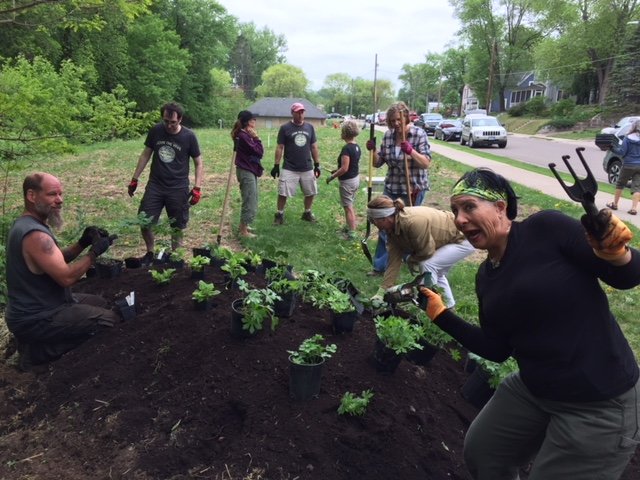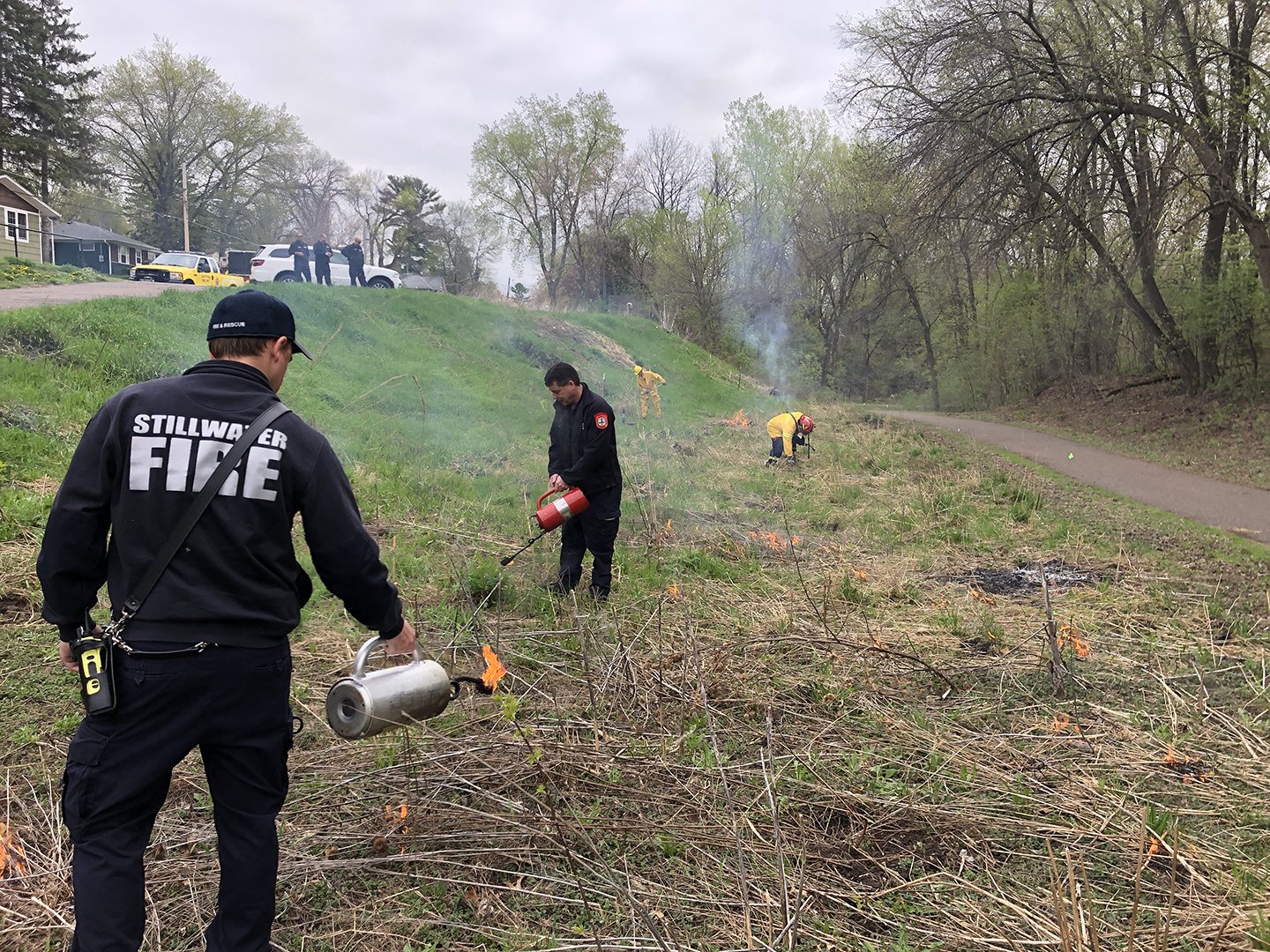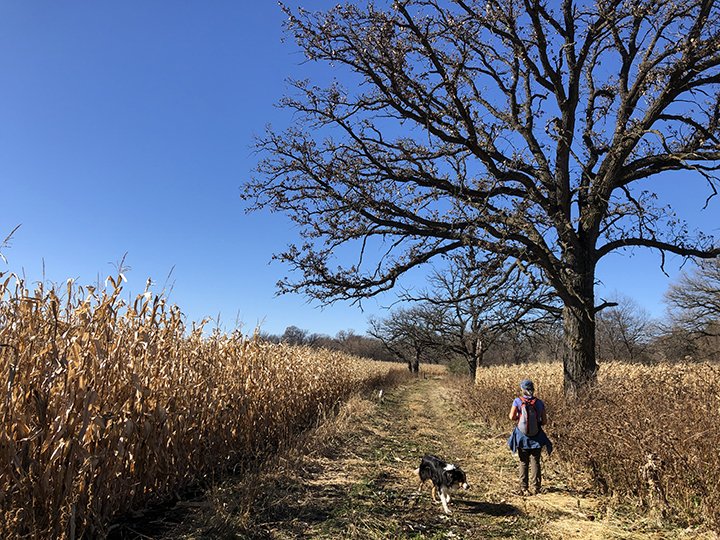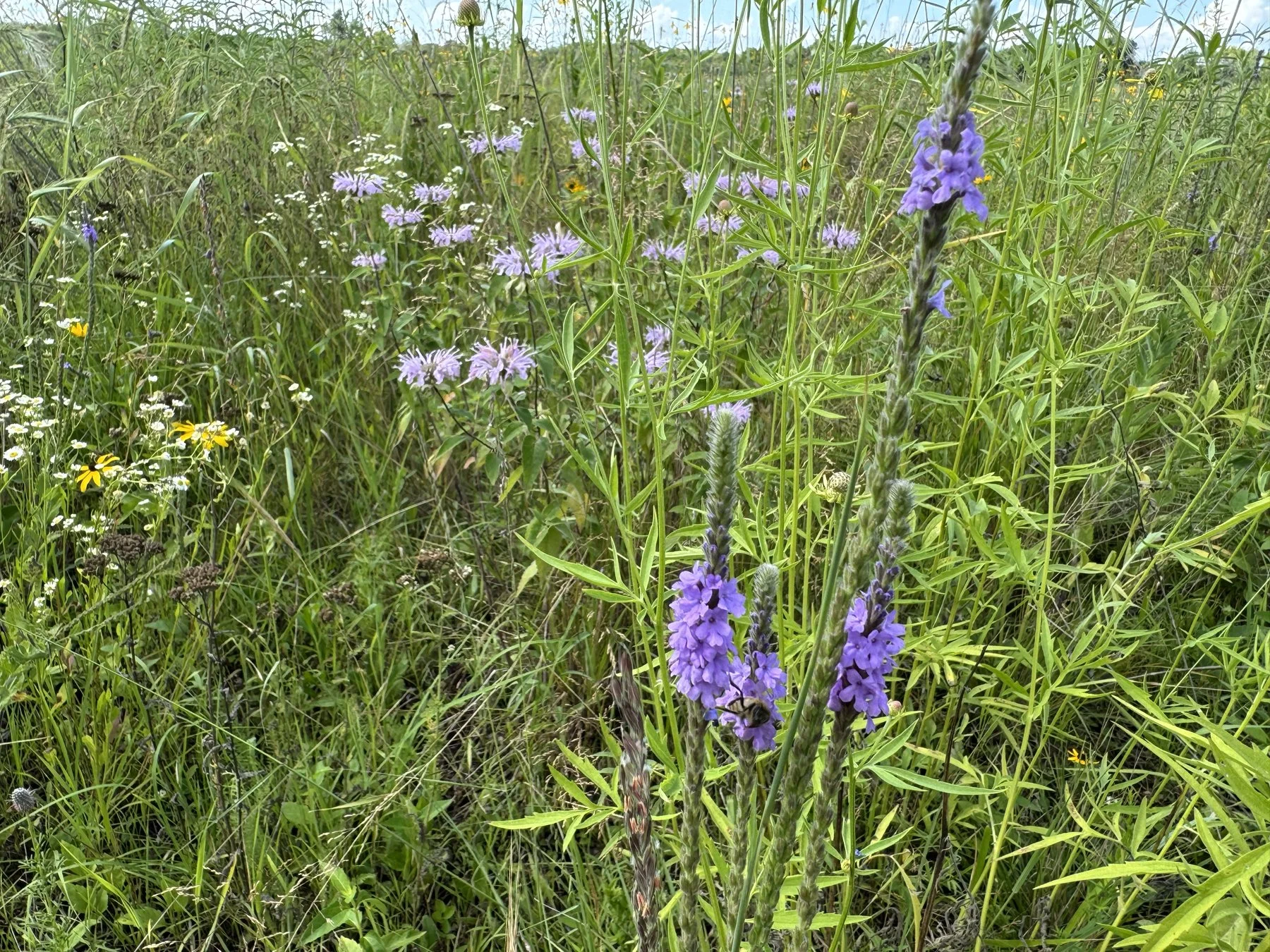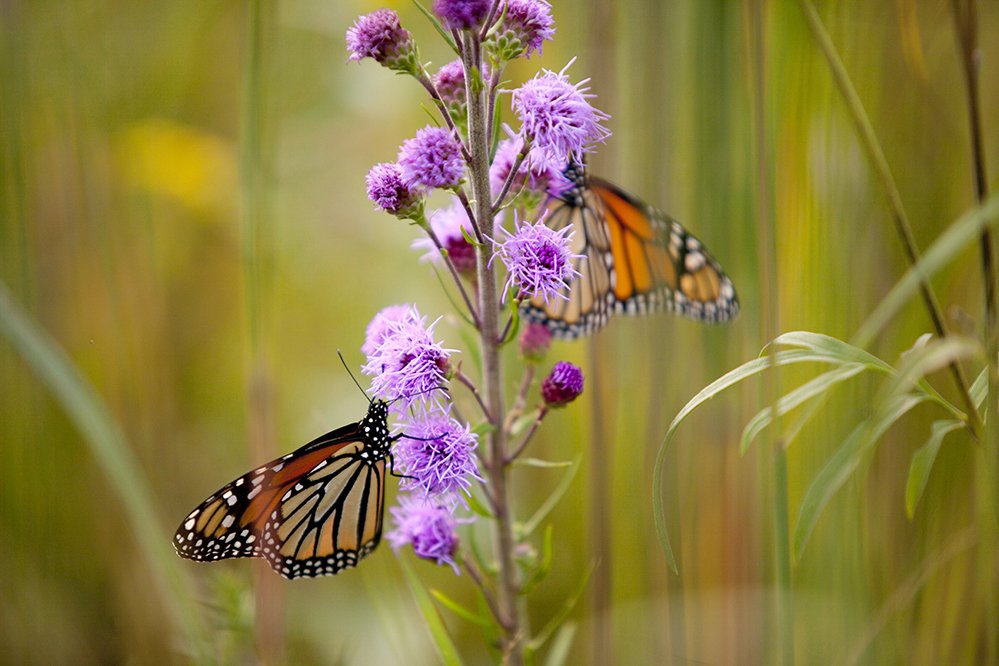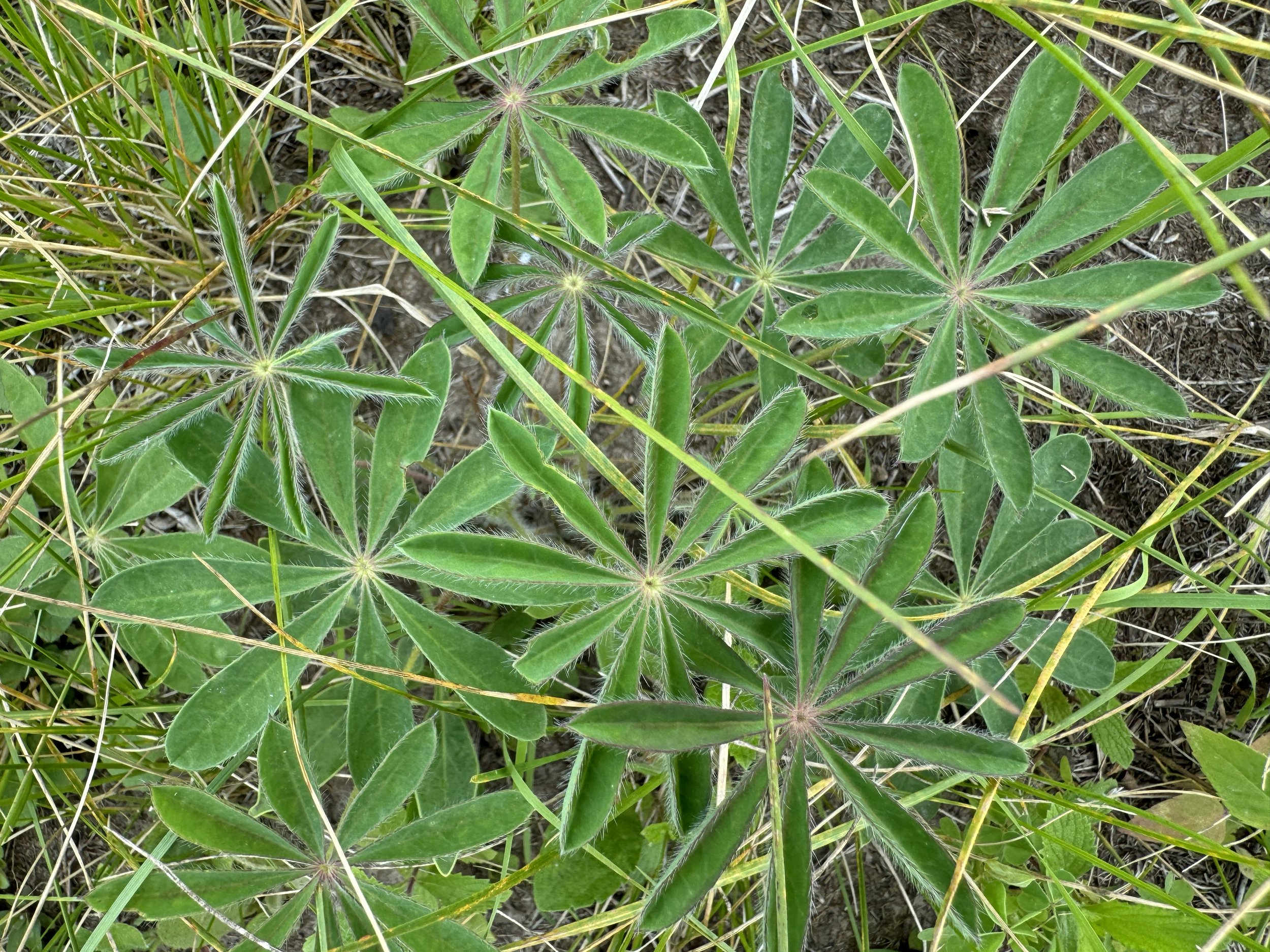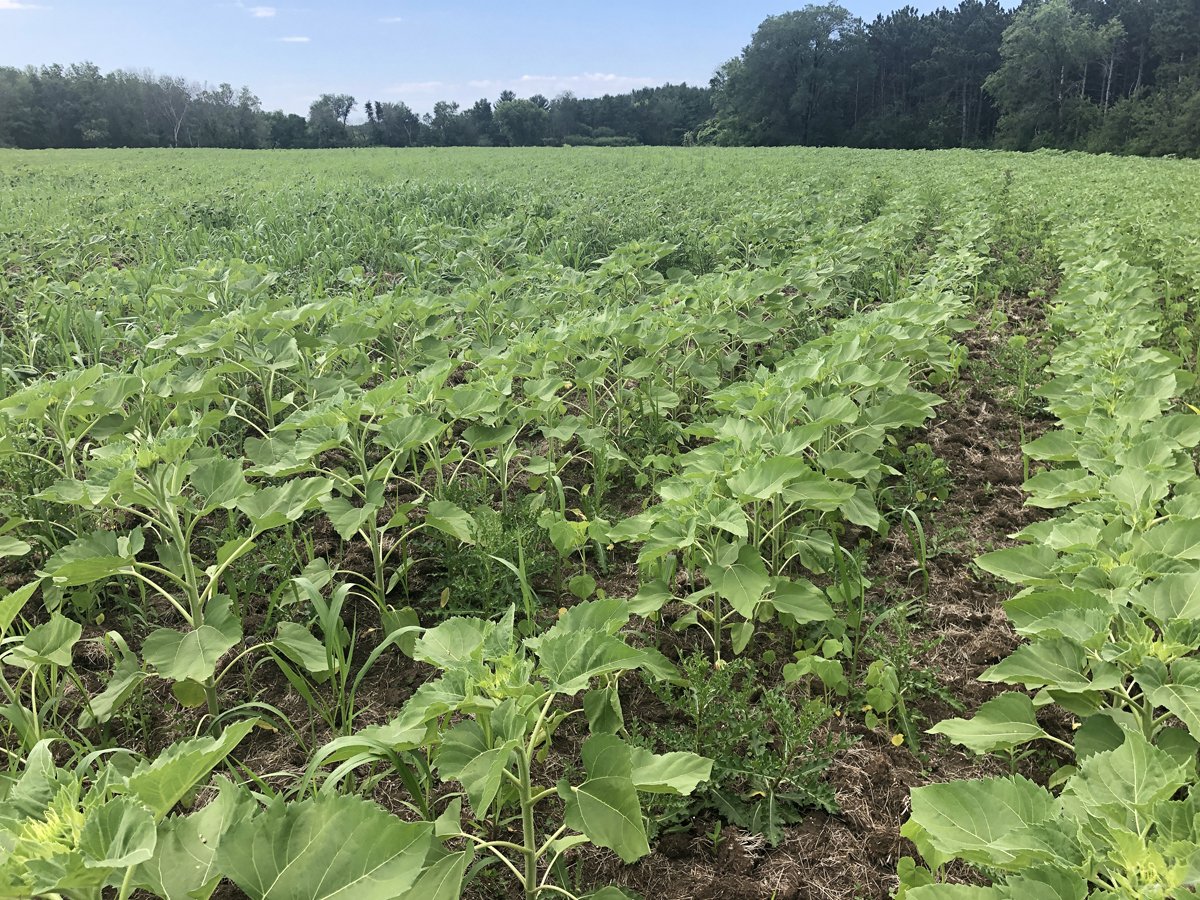
Our Critical Habitat Restorations
and Wildlife Conservation
Powered by our volunteers and partners, Pollinator Friendly Alliance restores pollinator habitats large and small. Collaboratively, we are dedicated to restoring 1,000 acres into biodiverse pollinator habitat using regenerative practices such as animal grazing, timed mowing, controlled burns, soil enrichment and cover or smother cropping. We do not use chemicals. Learn more about ecologically sound tactics and best practices for pollinators from our library of webinars.
Big Marine Park Expansion Biodiversity Project
Short video on Phase 1 of turtle protections
Short video on Phase 1 of bird protections
Short video on conservation efforts in 2025
Existing service roads will become walking trails
Wetlands need protection
Wild and beautiful natural areas need to be protected
Beaver pond needs protection from trappers and poachers
Beaver solutions discussion at pinch point winter 2025
Beaver lodge on pond winter 2025
Future protected turtle nesting area to be installed fall/winter 2025
Bird survey begins in oak savanna, fall 2024
Bird sound inventory with "Sounds of Nature MN Bioacoustics Research Lab" spring 2025
Beaver Innovations installing exclusion fencing Oct2025
Trapazoid exclusion fence allows beavers to inhabit area without damming nov2025
Signage to deter trappers from poaching.
Plastic fence to guide turtles to tunnel under road will be replaced in 2025
volunteers digging out old broken plastic fence
Trenching for turtle fencing to tunnel, adjacent to wetlands
5-acre brome field will be enhanced to flowering habitat
25-acre pesticide-treated corn crop will be converted to native prairie habitat in 2025
Upper corn field before restoration spring 2025
Convert 24 acres old ag fields, drill seeding native prairie grasses nov 2025
Sandy area for turtle nesting in 24 acre prairie
PFA is collaborating with Washington County Parks to enhance and restore this natural ecological jewel in Marine on St. Croix, Minnesota. This 1800-acre parcel was the Kelly & Nelson Family farms for over 50 years. Parts of the acquisition have been left wild and natural; ecologically important areas range from hardwood forests, prairies, and savannas to frequent shallow marshes, and lakes. Possibilities for abundant pollinator, bird and herp life are exciting.This 1800-acre parcel will be acquired in phases to become an addition to Big Marine Park Reserve 2024-2026.
Fall 2024: A group of ecology and conservation experts surveyed the beaver pond and waterways. A plan with beaver solutions is underway. Installation of fencing and levelers are to be installed near culverts and pinch points on the stream to keep water at proper levels and allow keystone species, our friends the beavers, to thrive here. Learn more about the importance of beaver here. The University of Minnesota, Dr. Emily Farifax, will follow the beaver project as part of an on-going beaver conservation study.
Spring 2025: Inventories were conducted of birds, herps, and pollinators.
Fall 2025: 25 acres of GMO corn was seeded with shortgrass prairie heavy in forbs for pollinators and wildlife. Loads of sand were delivered into a corridor for a turtle nesting area. Access to bare ground is essential for native bees who are ground nesters as well. Turtle habitat (sand patch) will be surrounded by electric fence to keep egg predators out. Tactics: Drill and hand seeding.
Seed mix includes: ground cherry, wild strawberry, side oats gama, little bluestem, prairie dropseed, giant hyssop, leadplant, prairie sage, butterfly milkweed, cream wild indoigo, partridge pea, purple prairie clover, white prairie clover, wild bergamot, stiff goldenrod, sky-blue aster, hoary vervain, heart-leaved alexanders.
Partners: Washington County Parks, Washington Conservation District, Minnesota Herpetological Society, Pheasants Forever, Beaver Innovations, University of Minnesota, Sounds of Nature U of M Bioacoustics Lab.
Read the coalition letter to protect the beautiful land across Manning Avenue from Big Marine Park, the Keystone Woods WMA, from mismanagement by the MN DNR . Read the letter here.
Lake Elmo Park Reserve
Controlled burn prep for cover crop and then prairie seeding
Soil inversion (mold board) in process by Stantec
Prairie area growth after soil inversion (mold board)
Late fall site ready for prairie seeding
Loading drill seeder for fall prairie seeding
Shoreline restoration area along Eagle Point Lake
Oak savanna understory cleared
Forestry mower removes understory of oak savanna at Eagle Point
Understory oak savanna restoration along Eagle Point Lake
Goats browsing savanna understory and pounding shoreline seed mix in
Winter seeding crew shoreline and oak savanna 2021
Corridor planting of 2500 native flowers along native prairie area 5/2022 near old barns
Volunteer gardeners planting 2500 native plants in corridor near old barns 5/2022
Volunteer gardeners 5/2022 planting baptisia, prairie clover, milk vetch and false indigo
Purple prairie clover in corridor along prairie near old barns growing 7/2022
Barn Prairie with cover crop growing adjacent to flowering corridor near old barns 7/2022
Native flower and grass seed for winter seeding 11/2022 near eagle point lake
Winter seeding crew Eagle Point restoration 11/2022
Wildflower corridor at Eagle Point savanna 2023
Planting a native shub row in the savanna canopy 10/2023
Carolina rose shrub 2024 at oak savanna
5/2024 Planting 800 bare roots at Eagle Point shoreline understory
Rose milkweed patch at eagle point shoreline
Proposed future pasture for bison 2023
Converted ag field into prairie next to propagation corridor july 2025
Milk vetch 2025 in propagation corridor near barn prairie
Barn prairie 2nd year July 2025
Forbs and grasses July 2025 at moldboard tactic site
Seeding crew, Eagle point corridor Oct 2025
Seeding forbs Eagle point corridor 2025
Phases 2019 and ongoing: PFA is collaborating with Washington County to restore 100’s of acres including a 36 acre oak savanna, shoreline and native prairie in multiple locations in Lake Elmo Park Reserve.
Tactics: Controlled burns, timed mowing, cover and smother cropping, forestry mower, hand seeding, broadcast seeding, drill seeding, and goat browsing.
Seed mixes include: 2022 plants: purple prairie clover, white prairie clover, cream white indigo, leadplant. 2019-2020 MNL woodland mix, buckthorn replacement mix, savanna shortgrass mix, mesic prairie mix. 2021 white prairie clover, purple prairie clover, wild bergamot and more.
2019, Late fall, Washington County Parks cleared the understory of woodlands surrounding Eagle Point Lake. No herbicides were used, rather the non-native trees were cut down and goats chewed down the remaining woody vegetation leaving stands of mature birch and bur oak.
2020, The goats are back to chew down re-sprouting of seed bank woody plants and stomp in the MNL shoreline seed mix. The second prairie area was brush hogged to remove woody and other vegetation in preparation for this fall’s cover crop seeding which will grow in the spring to replenish the soil and smother weeds from the seed bank. 2021, Native prairie winter seeding. 2022: Volunteers planted, weeded, watered and mulched over 2500 native plants for plant propagation corridor along the edge of 23-acre site of conversion from soybean crops to native priarie, near the historic barns (false indigo, Canada milk vetch, baptisia, purple and white prairie clover). 2023: Native plant corridor we seeded along Eagle Point Lake is flowering. We planted mature shrubs (dogwood, rose, elder) along the oak savanna area. 2024: May, planted 800 bare roots natives near understory at Eagle Point Lake (rose & whorled milkweed, obedient plant, purple coneflower, showy sunflower, hoary vervain, violet wood sorel, monarda, zig zag goldenrod, waterleaf, bellwort) 2025, Oct: Volunteers over seeded forbs by hand along the Eagle Point shoreline restoration (golden alexander, New England aster, smooth blue aster, yellow coneflower, cup plant.)
Partners: Washington County Parks, Stantec, Washington Conservation District, Minnesota Native Landscapes, Saint Paul Garden Club.
Stillwater Township Hall
West side of hall (before)
South side of hall (before)
Planting plan, west and south side of hall
Planting Prairiefire Crabapple
Four Crabapples planted April 29 2025
Removal of old turf and shrubs June 2025
South side new plantings June 2025
West side new plantings June 2025
Liatrus, sunflower and coneflower Aug 2025
liatrus and black eyed susans
Oct 2025 volunteers installed more flowers.
New England asters
2024: Stillwater Township received a gift from Heinrich Bantli, in memory of his beloved wife to install flowering pollinator habitat. The original plan was to plant a native prairie at the corner of Highway 96 and West of Norell Avenue. However, Washington County might be constructing a turnaround at the nearby intersection and has not committed to the amount of space needed for the construction. We moved the flowering habitat to the East side of Norell to avoid conflict with the County’s potential project. The Township Hall has a new landscape.
Partners: Heinrich Bantli, Stillwater Township, Artisan Environments, Trillium Garden Design, Landscape Alternatives, Glaciel Ridge Growers.
2025 Plants and trees: April 29: Four PrairieFire crab trees were planted along the Stonebridge fenceline. May: Existing unsightly over-trimmed shrubs and brick retaining wall will be removed. 400 native plants were planted among landscape boulders including anise hyssop, aster, bee balm, milkweed, blue indigo, geranium, beardtongue, liatris, sunflower, mountain mint, prairie smoke, pussytoes, coneflower, black eyed susan, prairie dropseed, porcupine sedge and more. Hired contactors and volunteers worked through the rain. A temporary wildlife fence was erected until the plants are fully mature. Oct. 8: Volunteers planted donated flowers: New England aster, boneset, culver’s root, goatsbeard, joe pye weed, rudbeckia, wild petunia, mountain mint, penstemon and spiderwort.
Pollinator Park, Stillwater
Before restoration
Solarization lower prairie
Burn on slope
Establishing blanket for flower garden
Planting native flower garden
Layer of compost on lawn
Monarch in upper prairie
Flower garden established
Flower garden established
Berm work on upper prairie
Upper prairie signage
Upper prairie first year
Upper prairie second year
pollinator lawn with self heal, clover, thyme
Bumble bee on self heal in lawn
First spring after seeding lower prairie
Lower prairie 2021
burn lower prairie 2023
2024 serviceberry trees in bloom
2024 creeping thyme in bee lawn
2024 upper prairie trail
2024 upper prairie trail
2024 Flower garden next to pumphouse
Oct 2024 Wild Mountain crew park work day
Established 2015: 523 Owens Street, Laurel & Owens, Stillwater. This five lot city-owned area was converted from turf to prairie, pollinator lawn and flower garden. The city’s water reservoir rests underneath, the popular Mulberry Creek trail run alongside and the historic pumphouse resides here.
Tactics: Turf was removed with a sod cutter from upper prairie, flower garden and lawn areas then left at curb for locals to re-use. Flower garden was planted with 6” potted plants. Woody veg. on the slope was lopped, mowed and burned. White vinegar sprayed on unwanted grasses.The lower prairie turf was solarized with plastic followed with a smother crop of buckwheat which rejuvenated the soil in prep for a fall prairie seeding. In 2018, the pollinator lawn received a layer of compost and was inter-seeded. Ongoing maintenance of all includes weed whipping and lopping of foxtail and woody veg plus weekly hand weeding and timed mowing during growing season.
Plants: Flower garden 2015: Penstemon, Liatrus, sedum, anise hyssop, oxeye, lobelia, monarda, joe pye weed, blazing star, prairie smoke, mountain mint, yellow headed coneflower, compass plant, golden alexander, meadow rue, butterfly weed, marsh milkweed, ironweed, purple coneflower. Bee lawn 2015: self heal, fine and creeping fescue, dutch white clover, creeping thyme; Flower garden: wild bergamot/bee balm, rough blazingstar, yellow headed coneflower, joe pye weed, compass plant, oxe-eye, new england aster, fragrant hyssop, heart leaf golden alexander, meadow rue, butterfly weed, creeping sedum, prairie smoke, penstemon, marsh milkweek, common ironweed, purple coneflower, meadow blazing star.
Watch video on solarization tactic used in Pollinator Park
Partners: City of Stillwater, Natural Shore, Prairie Restorations, Minnesota Native Landscapes, Saint Paul Garden Club, Cheryl Larson Realtor, Bruce Lundeen and Many Volunteers.
2016-2020 Slope: bluestem, common milkweed, wild bergamont, stiff goldenrod, asters, pioneer mix, dotted blazingstar, foxglove beardtongue, switch grass, smooth wild rose, flodman's thistle, golden alexander, prairie clover, anise hyssop, common oxeeye, cup plant, hoary vervain, black eyed susan. Upper prairie: Native priarie was seeded early spring - little bluestem, june grass, blue gama, canada wild rye, butterfly weed, leadplant, purple prairie clover, black-eyed susan, hoary vervain, common ox-eye, dotted blazing star, stiff goldenrod, golden alexander, common milkweed, wild bergamot, showy goldenrod, canada tick trefoil, gray goldenrod, canada milk vetch, blue vervain, yarrow, prairie rose, western spiderwort. Lower prairie: The lower prairie was seeded 2018 and 2020 with wildflowers, grasses and sedges: anise hyssop, columbine, swamp milkweed, heath aster, new england aster, aromatic aster, tickseed, purple coneflower, rattlesnake master, boneset, sneezeweed, oxeye, meadow blazing star, cardinal flower, blue lobelia, bergamot, foxglove beardtongue, obedient plant, mountain mint, grey headed coneflower, black-eyed susan, blue vervain, hoary vervain, ironweed, culvers root, golden alexander, big bluestem, side oats gama, sprengel’s sedge, fox sedge, canada wild rye, little bluestem, indian grass, prairie cordgrass. The lower prairie was again seeded with a cover crop of oats and pollinator dry mesic seed mix including bluestem, blue gama, dropseed, yarrow, fragrant giant hyssop, leadplant, columbine, milkweed, canada milk vetch, partridge pea, coneflower, ox-eye, stiff sunflower, blazing star, wild bergamot, penstemon, prairie phlox, sky blue aster, spiderwort, hoary vervain, golden alexanders. Significant hand weeding and weed whipping on the lower prairie first year was needed to remove foxtail, thistle and sumac.2021-2022: Diligent hand weeding of tansy, Canada thistle and tree saplings. 2023: Lower prairie burn in spring. Solarized small sections of canada thistle on slope and raspberry near sign which will be seeded with little blue stem. Selective mowing of upper prairie. Installing short row of hedges along forest and garden east prairie trail entrance. 2024: Early spring: upper prairie conservation mowed. Canada thistle, Asian raspberry and prickly ash regularly removed. Generous rainfall resulted in lots of blooms. 2025: Spring - prairie sections with heavy weed competition were dug up and seeded with yellow coneflower, golden alexander and New England aster. Fall - heavy weed competition areas were eradicated by hand pulling and overseeded with yellow coneflower, monarda, gamma grass and little bluestem.
St. Croix Bluffs, Hastings
2020 18-acre conversion: before corn crop was tilled
2021 spring, 18-acre conversion: corn crop disc'd
2021 Beneficial insect research - beetle bumps (compost piles)
2021 Stem nesting reseach - wild bee huts
2021 May 18-acre conversion: seeding oat cover crop
2021 June 18-acre conversion: oat cover crop
2021 July: 18-acre conversion, seeding sunflower smother crop
2021 Aug, 18-acre conversion, sunflower smother crop
2021 Sunflower before fall harvest
2021 winter prairie seeding of 18-acre and adjacent 20 acres resulted in first plants 2022 June
2023 May 18-acre conversion, overseeding south end and thistle weeding
2023 May prairie emerging, wild bergamot
2023 May, prairie emerging, gray headed coneflower
2023 May prairie emerging, common yarrow
2023 July spotted bee balm
2023 July prairie south 6 acres
2023 July flowering prairie bumble bee
2024 native prairie established on 38 acres
July 2025 established native prairie
yarrow, anise hyssop, purple prairie clover, monarda, vervain, false sunflower, gray-headed coneflower, warm season grasses, common milkweed
July 2025
July 2025
The St. Croix River Bluffs Restoration Project, along the St. Croix National Scenic Riverway, has three major species communities—the topography and wet and dry riverine areas, plus relatively unbroken stretches of riverside forests, make this an important wild corridor refuge for pollinators, birds and other animals. Birds follow natural river landmarks during migration. This is home to a long list of endangered or at-risk species including Rusty patched bumble bee, Karner blue butterfly, Lightening bug, Splendid clubtail dragonfly, Wood frog, Blandings turtle, Blue racer snake, Red-headed woodpecker, Red shouldered hawk, Gray wolf and many more. PFA is raising funds to support a conversion of 18 acres of corn crops and 20 acres of under-managed savanna just 150 yards off the Riverway. Restoring the first phase 18-acre conversion to native habitat removes 22 pounds of crop phosphorus runoff downslope to the river every year. Tactics: Variety of tactics were employed including timed mowing, mold board, cover and smother cropping, forestry mower, hand seeding, broadcast seeding, drill seeding, discing and goat browsing. We experimented with sunflower as a smother crop with excellent results.
U of M Entomology 2020-2022 beneficial insect study to evaluate if beetle banks (compost piles) and wild bee habitat (reeds huts) encouraged insect nesting and overwintering.
Phases 2020-2024: 10191 St. Croix Trail South, Hastings. This multi-phase restoration is planned throughout the park on over 60 acres of land including conversion of 18 acres of corn crop into native short grass prairie, restoration of shoreline, grasslands and 20 acres of oak savanna.
Seed mixes include: (prairie) Canada milk vetch, wild lupine, butterfly milkweed, northern bedstraw, stiff sunflower, great blazing star, wood betony, prairie phlox, prairie rose, beared birdfood violet, leadplant, Canada anemone, common milkweed, partridge pea, show tick trefoil, common ox-eye.
2020-2021: Beneficial insect research conducted by U of M Entomology. Corn crops harvested and disc’d.
2021: Oats cover crop seeded spring on 18-acre ag conversion. Sunflower smother crop seeded and harvested.
2022: Drill seeding May 17 of 18-acre conversion and adjacent 20 acre savanna with native prairie seed mix.
2023: May 14 Hand overseeding of south 6 acres in conversion and weeding of canada thistle.
Partners: Washington County Parks, Washington Conservation District, Prairie Moon Nursery, Stantec, Minnesota Native Landscapes.
Watch video of buckthorn removal with fungus at St. Croix Bluffs
Pine Point Park West, Stillwater
Discing to ready for seeding
Volunteers planting forbs
Plants growing in coconut mat
Spider wort
Monarchs on liatrus
spider wort
Purple prairie clover
Mountain mint
Seed and plant list
Black eyed susan
Citizen science pollinator count
July 2022 established prairie
Winter seeding
May 2023 Controlled burn at Pine Point, 14-acre established prairie (Butterfly Landing)
1,000 native flowers planted in burned area, Pine Point West (Butterfly Landing)
Restored 2016-2020: Butterfly Landing sits on the northeast end of Pine Point Regional Park, a 296 acre park in Washington County that draws 82,000 visitors per year. In a collaboration, we converted 14 acres of old agricultural land from corn crops to prairie grasses and wildflowers. Butterfly Landing also serves as an ecology education demonstration and field study area. A multi-year citizen science pollinator count collects floral visitors with an emphasis on the Karner blue butterfly, Monarch butterfly and Rusty patched bumble bee. There are two areas in this park in conversion: 14 acres west of Norell Avenue (work began 2015).
Tactics: Controlled burns, conservation haying, cover and smother cropping, hand seeding, broadcast seeding.
Plants and seed mixes include: Forbs: Liatrus corms, Showy Goldenrod, Stiff Goldenrod, Common Milkweed, Butterfly Milkweed, New England Aster, Prairie Coreopsis, Fireweed, Giant Anise Hyssop, Monarda, Wild Lupine Perennis (for Karner Blue Butterfly).
Seed: Common milkweed, Liatrus, Native lupine perennis, Giant hyssop, Milkweed, Fireweed, Prairie coreopsis, Wild lupine, Stiff goldenrod, Prairie violet, Butterfly weed, and Prairie flox.
2015: Corn crops were tilled under and native grasses were seeded. 2016 Broadcast seeding pollinator grass and forb mix. October: 2018 volunteers planted over 2,000 plugs in a weed suppression mat: 2019: Volunteers winter seeded over the snow, interpretative signage and 100 Liatrus blazing star corms were planted. 2020 Fall: Big blue stem was conservation hayed to allow forbs a chance to grow. 2023: Six acres of Butterfly landing 14-acre established prairie was burned to pressure from tall grasses. 2025: Hemiparasitic fall seeding of mowed 7 acres with wood betony and Indian paintbrush.
Partners: Washington County Parks, Washington Conservation District, Minnesota Native Landscapes, Hugh J. Andersen Foundation.
Watch video on community science program at Butterfly Landing
Pine Point Park East, Stillwater
Plan of Pine Point East conversion from ag to native prairie
2022 Pine Point East corn crop harvested and 11 acres ready for seeding
May 2023 Seed mix for seed drilling at Pine Point East conversion.
May 2023 Pine Point East conversion from ag to prairie. Seed drill of native prairie seeding 11 acres.
A section in the oak savanna area solarized in prep for native forbs planting this fall
Installed 200 mature shrubs along the oak savanna 10/23
Installed 250+ native plants in solarized meadow area 10/23
Part of the installation team 10/23
2024 July 11-acre prairie seed emerging
2024 July savanna meadow
2024 July meadow mountain mint
2024 July lupine in solarized meadow
2024 July vervain in solarized meadow
Anise hyssop peeking through, May 2025
False sunflower peeking through, May 2025
Work started 2023:: This 40+ acre area is east of Norell Avenue and will have connectivity to the larger Pine Point Park. 2023: 11-acres converted from treated seed ag field to a native short grass prairie. The adjacent 19-acre ag field will be converted in 2025. The adjacent 6-acre remnant meadow and oak savanna will be restored and enhanced.
2023: On May 17th, the 11-acre old ag field was drill seeded at Pine Point East. This conversion from pesticide ag field to a native prairie will take several years to establish due to the compacted and unhealthy soil in the field. Washington Co. Parks cleared the understory of the adjacent oak savanna. Savanna meadow was burned spring, 2023. These plants emerged 2024: stiff goldenrod, showy goldenrod, wild rose, brown eyed susan, monarda, large-leafed aster, prairie sage, yarrow, mountain mint in the remnant. On June 16 we covered part of the burn area with tarps to solarize weed competition in prep for fall forb planting. On May 31st, 2000 volunteers planted native flowers plugs into the 11-acre field. In Oct, 2023: Volunteers planted 250 mature shrubs (hazelnut, rose, dogwood, ninebark) along the treeline edge of the savanna meadow, and 500 mature native plants into the solarized meadow area (blazing star, butterfly milkweed, wild lupine, indigo, silky aster).
Tactics: Controlled burn, solarization, cover and smother cropping, drill seeding, planting by hand, conservation mowing.
2024: July spot mowing in prairie for weed competition and weed whipped around shrubs.
2025: Because the soil is very compacted and unhealthy from years of pesticide agriculture, the field requres overseeding. Washington County Parks drill seeded May 7th native seed mix with cover crop, bunch grasses and forbs including Canada wild rye, little bluestem, Side-oats grama, prairie clover, trefoil, wild bergamot and more.
Seed: 2023: Little & big bluestem, switchgrass, prairie dropseed, partridge pea, lead plant, milk vetch, white & purple prairie clover, Canada tick trefoil, wild lupine, yarrow, common & butterfly milkweed, creopsis, stiff & maximilians sunflower, alumroot, blazing star, bergamot, primrose, stiff & showy goldenrod, wood betony, beard tongue, prairie phlox, mountain mint, black eyed susan, smooth & New England aster, spiderwort, vervain, golden alexander, oats. Drill seed April, 2025: Side-oats grama, indian grass, oval sedge, butterfly milkweed, white & purple prairie clover, common ox-eye, wild bergamot, evening primrose, penstemon, black-eyed susan, stiff goldenrod, vervain and golden alexander.
Partners: Washington County Parks, Washington Conservation District, MNL Corp, Hugh J. Andersen Foundation.
Cottage Grove Ravine Regional Park
Map 9-acre conversion
May 2022 grasses before conversion
July 2022 smother crop interseeding with sunflowers
2023 Mold board turns soil over to cook the roots, remove unwanted grasses
Drill seeded late fall 2023
Handseeding Dec 2024
Converted prairie third year July 2025
purple prairie clover, false sunflower, sage, monarda, warm season grasses, black eyed susan
July 2025 prairie
July 2025
before: bridge/culvert
Andy, Beaver Innovations, preparing the site for protections install
Pollinator Friendly Alliance and Washington County Parks at the beaver install
After: Octagonal fence at culvert 2025
Octagonal fencing around culvert sept 2025
Industrious beaver building damn around fence - need to re-evaluate and adjust
Conversion 2022: Cottage Grove Ravine Regional Park is 515 acres which sits 2 miles from the Mississippi River with a diverse topography of heavily wooded ravines, slopes, wetlands and dry open grassland areas that offer an unusual variety of habitats and attract a diverse population of birds and insects from the pawnee skipper to the golden eagle. A 9-acre area is being converted from corn crops to native habitat. Sunflowers were planted spring and smother crop summer to rebuild soil nutrition. Shortgrass native prairie seed mix will be seeded Spring of 2023.
Tactics: Discing, cover and smother cropping, drill seeding.
Seed Cover/smother crop: Common sunflower, annual ryegrass, mammoth red clover, tapmaster radish, polish rapeseed.
2022: Spring: Corn crops were disced and sunflower cover crop planted native grasses were seeded. Summer: Smother crop was interseeded. 2023: June 10 mold boarded and overseeded with native forb and grass seed mix. 2023: Fall interseeding. 2024: Fall final bird and polllinator habitat overseeding by hand bergamot, little blue stem, prairie dropseed, coneflower, hyssop, aster, prairie clover, obedient plant, black eyed susan, goldenrod, sunflower. 2025: Sept. Beaver protections/octagonal fence were installed at the culvert/bridge to maintain ponds levels and allow the beaver family to prosper.
Our Partners: Washington County Parks, Strofhus Farm, Audubon, Beaver Innovations, University of Minnesota Dr. Emily Fairfax












